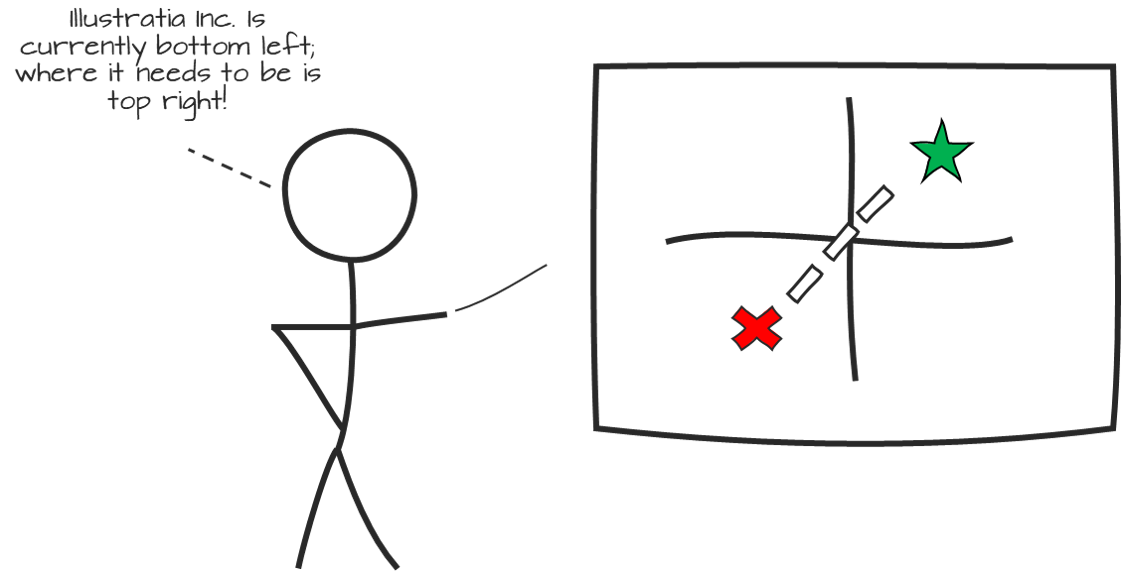Why consultants love 2x2s (and you should too)
If you’ve ever brought a consultant team in for a strategy project, you are probably familiar with this scene:
The reason I am almost certain this is familiar to you is because 2x2s are the greatest thing to happen to consultants since the navy blue suit was invented.
Here is why we love them, and you should too!
Reason #1: They are easy to make.
Sometimes building a framework to convey information can get complicated. This is not one of them.
You don’t need a PhD in PowerPoint or Excel to make one of these and they are just as persuasive as the fanciest slide.
But that’s not the only reason we love them.
Reason #2: You can make them fast, and in real-time.
The point of models like these is to get people on the same page. Often the most important time to get people aligned is right there, in the moment, during the meeting.
That doesn’t leave much time to come up with a complex model.
Even when you’re short on time, a 2x2 can be whipped up on a whiteboard mid-conversation and channel everybody’s energy into a meaningful structured discussion.
It’s, a huge bonus, but it’s not necessarily why consultants use them all the time.
Reason #3: They’re helpful for making big decisions easier.
In the world of frameworks, 2x2s are the carpenter ant. They may be simple, but they are able to carry way bigger ideas than you would expect such a basic thing to do.
With virtually nothing to them, they can do the work of dozens of slides and hours of research.
Let me explain why.
As smart as people are, we’re not that great at taking in a lot of information at once.
When there are too many inputs coming at us at once, we get confused and can’t process them as quickly as we’d like. Why do you think this is a thing:
We’re much better at processing fewer packets of information at once, and even better when those packets are binary in nature.
That’s why this graph makes sense to you:
While this one will make your face pucker like you just bit into a lemon:
What 2x2s do is cut all the noise and simplify your decision-making down to the criteria that matter most.
In any decision, you can usually find two criteria that matter more than others.
Including what restaurant you should go to:
….or which clothes to wear:
By concentrating your thinking on only two criteria, you ensure that you’re focusing on the things that actually matter without getting distracted by ‘noise’.
The hardest part of this exercise is choosing the right criteria for your axes. If you choose ‘noise’ instead of the important points, the decision you’ll make will eventually be superseded when the conversation moves to the criteria that actually matters.
Once you decide on your top criteria, and agree on the general direction, you can re-introduce some complexity and plunge into more detail.
If you’re facing a conceptual decision with a lot of moving parts, consider using a 2x2. By keeping it simple, you’ll remove the ‘noise’ and get to the point much quicker than if you dive into the detail right away.
Enjoyed the article? Share it with your network!
























